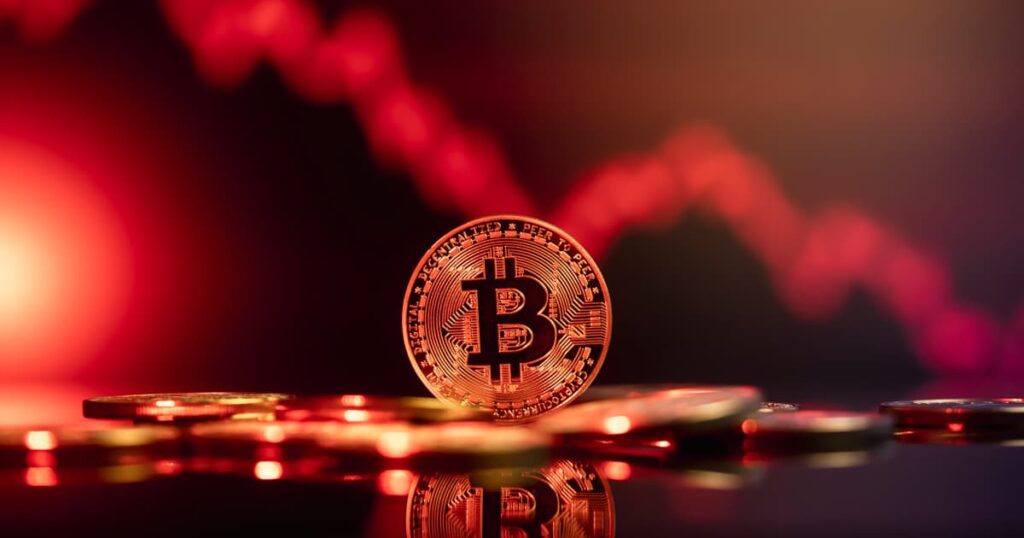Crypto Crash & What Can We Learn From It?

The cryptocurrency crash that occurred last week has brought the prices of almost all the cryptocurrencies on a downward rollercoaster ride. On 11th May, last Tuesday, Bitcoin (BTC) fell below $30,000 for the first time in 10 months, bringing the prices of other altcoins down with it. Other coins such as Terra (LUNA) and stablecoins like TerraUSD (UST) have also been significantly affected by the crypto crash. This has led to a massive sell-off in the cryptocurrency market as some investors seek to cut their losses as much as possible.
While it is depressing to look at the current prices of cryptocurrencies, we should certainly still examine the market and see how we can move on from this cryptocurrency crash. The crash is not going to last forever and it is just a matter of time before the prices of cryptocurrencies go on the road to recovery. Hence, do read on if you are curious to find out what exactly can we learn from this cryptocurrency crash. In this article, we will first be exploring the impacts of the cryptocurrency crash followed by the knowledge we have gained from the crash.
Bitcoin (BTC)
Bitcoin (BTC) has fallen more than 50% from its all-time high of near $69,000 just six months ago, with traders fearful that if a crucial resistance level is breached, the fall might be considerably more catastrophic. Bitcoin’s value has fallen considerably beyond last year’s post-crash low in July, and it is currently worth less than half of what it was when the market peaked in November. Despite the fact that $BTC has seen several collapses in the past, it has always bounced back within a few months. Some analysts believe there is a risk that $BTC will go much deeper than its present level this time. Other cryptocurrencies and altcoins, such as Avalanche, ApeCoin, Cardano, Shiba Inu, and Solana, have been following in Bitcoin’s footsteps, with several seeing double-digit drops in value.
Terra (LUNA)
Terra (LUNA) lost approximately 99% of its value last week. Despite having peaked near $120 last month, its price has plummeted below $0.001. Its demise devastated many crypto investors’ wealth. Binance, the largest cryptocurrency exchange by market capitalization, has delisted the $LUNA coin in the wake of the Terra Luna meltdown. Purchases and withdrawals of $LUNA have also been halted on Crypto.com. The exchange had done the same a few hours before rescinding the suspension. LUNA’s market capitalization has dropped from $40 billion to just over $200 million. $LUNA is presently regarded as a very volatile token. The currency has the ability to rebound, but the situation is now quite unpredictable and several crypto trading sites have delisted the token as well.
TerraUSD (UST)
TerraUSD (UST) lost its peg last week, and the stablecoin’s price plummeted to around $0.17, losing over 80% of its worth. It has now recovered some of its value, albeit it remains well below the $1 objective. TerraUSD is a stablecoin with an algorithm. The computer code driving the arbitrage mechanism keeps its pricing steady. This is in contrast to a fiat-backed stablecoin, such as the USD Coin, which is backed by cash and currency equivalents. In other words, for every $1 in circulation, one dollar (or its equivalent) is maintained in reserve. This is different from algorithmic stablecoins. The arbitrage mechanism was unable to remedy the situation when supply soared, causing TerraUSD to collapse and lose its peg.
What have we learnt from this Crypto crash?
The cryptocurrency crash that happened last week is undeniably an eye-opener for most investors, be it amateurs or professionals. Cryptocurrency is an unstable and volatile asset. Thus, the crash has taught us that we should never put our entire life-savings into cryptocurrency. Even if you are a hardcore believer of cryptocurrency, the minimum you can do is to at least diversify your crypto portfolio to reduce your overall risk profile.
The market is very unpredictable, and you might never know when the prices of cryptocurrencies might recover or when the next bull run might be. This is also the reason why investing more money to buy the dip might not always be the best idea. It might just keep dipping, and it is hard to time to market. Unless you have plenty of extra savings, you ought to think twice before attempting to cushion your losses by buying the dip.
Bitcoin can be a risky investment, but this crash has also taught us that altcoins are way risker as compared to Bitcoin. This can be seen through the example of Terra Luna. $LUNA has lost almost all of its value in just a few days and many crypto exchanges have already restricted the purchase of the token. Altcoins are notoriously volatile and risky. On the other hand, Bitcoin has the most liquidity and is the most secure network, having the highest POW hash rate for transaction validation.
Disclaimer: Any opinion shared in this article is strictly the views and opinions of the author and should not be construed as financial advice. Flipster makes no judgment on the projects or the content uploaded.